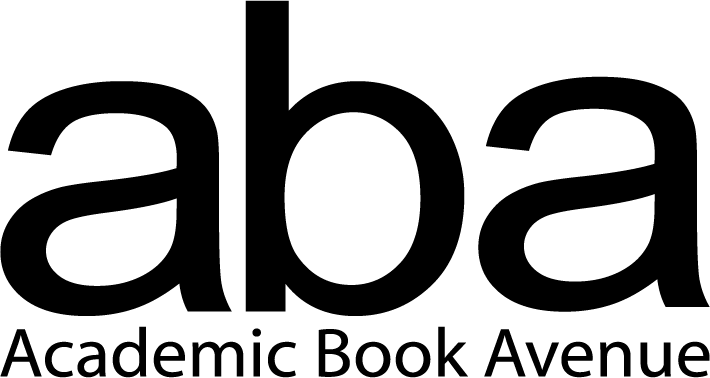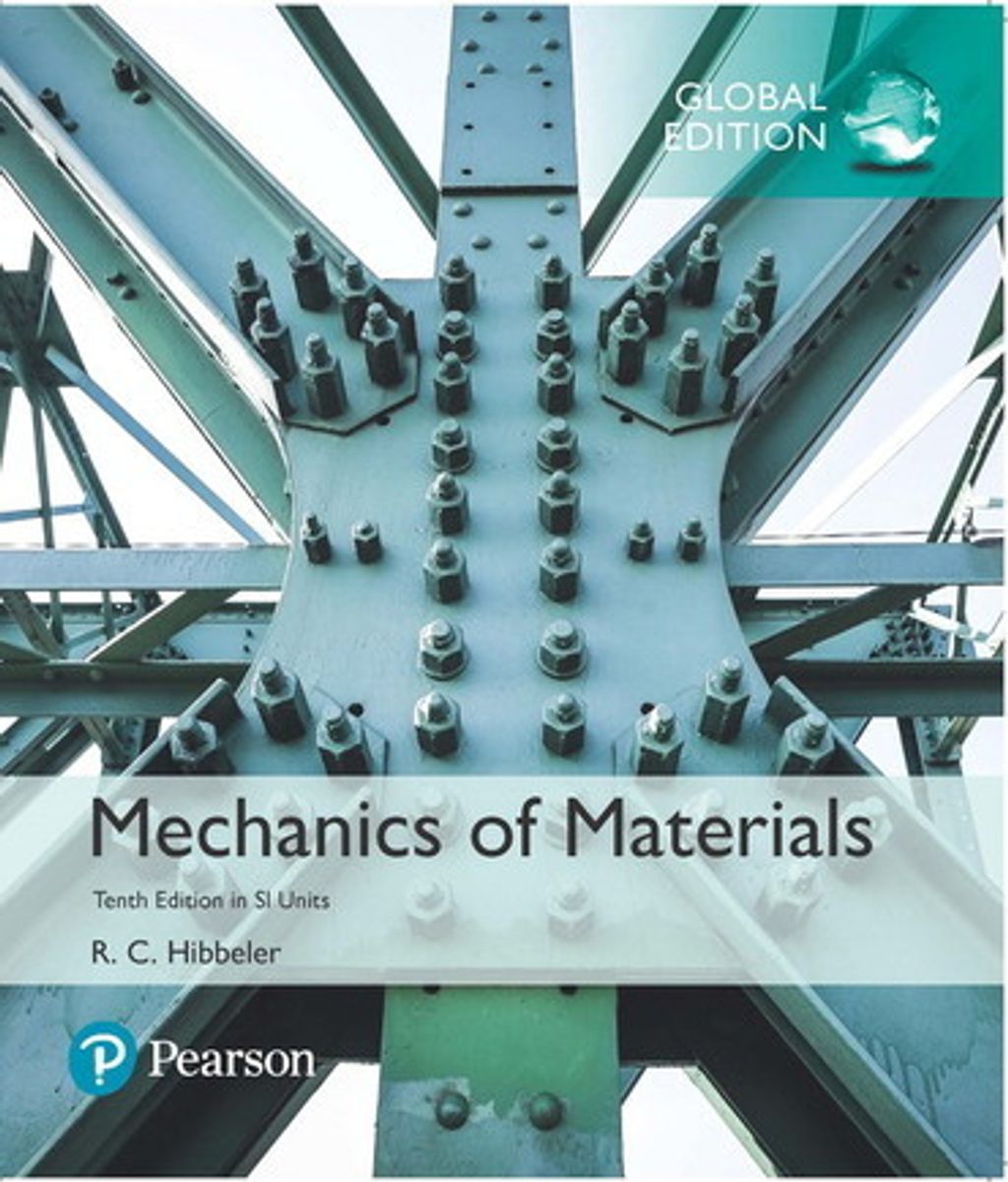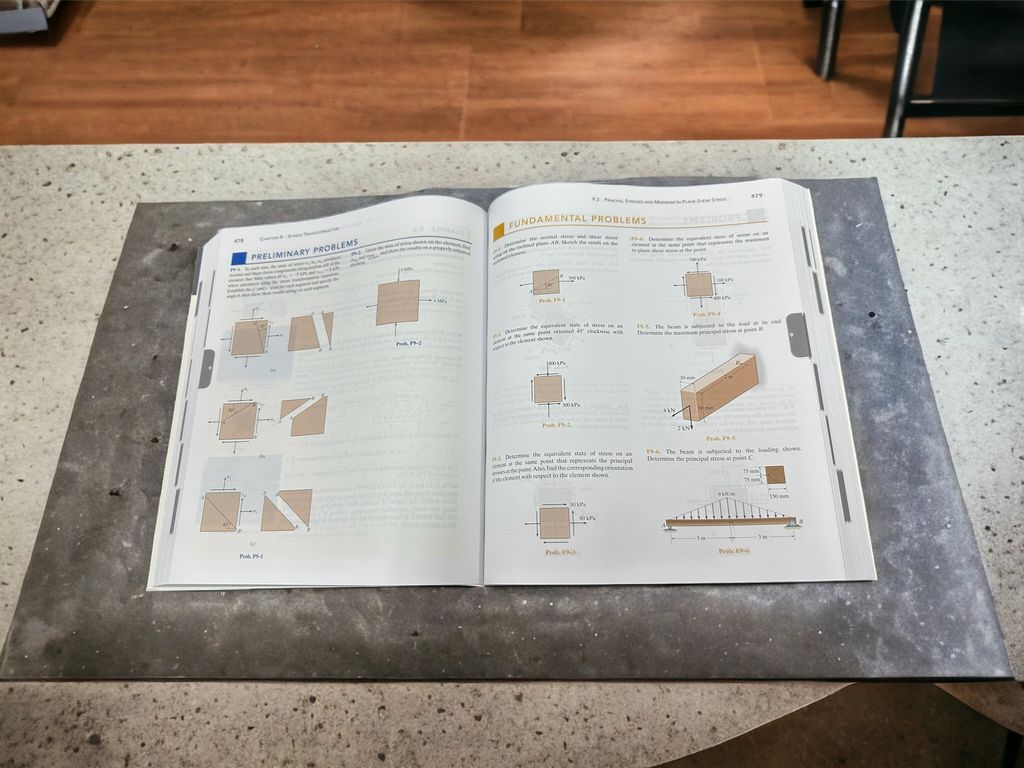Mechanics of Materials in SI Units, 10th Edition 9781292178202, Hibbeler
- Regular price
- RM 116.00
- Sale price
- RM 116.00
- Regular price
-
RM 116.00
Share
Russell C. Hibbeler
For undergraduate Mechanics of Materials courses in Mechanical, Civil, and Aerospace Engineering departments.
Thorough coverage, a highly visual presentation, and increased problem solving from an author you trust.
Mechanics of Materials clearly and thoroughly presents the theory and supports the application of essential mechanics of materials principles. Professor Hibbeler’s concise writing style, countless examples, and stunning four-color photorealistic art program — all shaped by the comments and suggestions of hundreds of colleagues and students — help students visualize and master difficult concepts. The Tenth SI Edition retains the hallmark features synonymous with the Hibbeler franchise, but has been enhanced with the most current information, a fresh new layout, added problem solving, and increased flexibility in the way topics are covered in class.
- Stress
- 1.1 Introduction
- 1.2 Equilibrium of a Deformable Body
- 1.3 Stress
- 1.4 Average Normal Stress in an Axially Loaded Bar
- 1.5 Average Shear Stress
- 1.6 Allowable Stress Design
- 1.7 Limit State Design
- Strain
- 2.1 Deformation
- 2.2 Strain
- Mechanical Properties of Materials
- 3.1 The Tension and Compression Test
- 3.2 The Stress--Strain Diagram
- 3.3 Stress--Strain Behavior of Ductile and Brittle Materials
- 3.4 Strain Energy
- 3.5 Poisson's Ratio
- 3.6 The Shear Stress--Strain Diagram
- *3.7 Failure of Materials Due to Creep and Fatigue
- Axial Load
- 4.1 Saint-Venant's Principle
- 4.2 Elastic Deformation of an Axially Loaded Member
- 4.3 Principle of Superposition
- 4.4 Statically Indeterminate Axially Loaded Members
- 4.5 The Force Method of Analysis for Axially Loaded Members
- 4.6 Thermal Stress
- 4.7 Stress Concentrations
- *4.8 Inelastic Axial Deformation
- *4.9 Residual Stress
- Torsion
- 5.1 Torsional Deformation of a Circular Shaft
- 5.2 The Torsion Formula
- 5.3 Power Transmission
- 5.4 Angle of Twist
- 5.5 Statically Indeterminate Torque-Loaded Members
- *5.6 Solid Noncircular Shafts
- *5.7 Thin-Walled Tubes Having Closed Cross Sections
- 5.8 Stress Concentration
- *5.9 Inelastic Torsion
- *5.10 Residual Stress
- Bending
- 6.1 Shear and Moment Diagrams
- 6.2 Graphical Method for Constructing Shear and Moment Diagrams
- 6.3 Bending Deformation of a Straight Member
- 6.4 The Flexure Formula
- 6.5 Unsymmetric Bending
- *6.6 Composite Beams
- *6.7 Reinforced Concrete Beams
- *6.8 Curved Beams
- 6.9 Stress Concentrations
- *6.10 Inelastic Bending
- Transverse Shear
- 7.1 Shear in Straight Members
- 7.2 The Shear Formula
- 7.3 Shear Flow in Built-Up Members
- 7.4 Shear Flow in Thin-Walled Members
- *7.5 Shear Center for Open Thin-Walled Members
- Combined Loadings
- 8.1 Thin-Walled Pressure Vessels
- 8.2 State of Stress Caused by Combined Loadings
- Stress Transformation
- 9.1 Plane-Stress Transformation
- 9.2 General Equations of Plane-Stress Transformation
- 9.3 Principal Stresses and Maximum In-Plane Shear Stress
- 9.4 Mohr's Circle-Plane Stress
- 9.5 Absolute Maximum Shear Stress
- Strain Transformation
- 10.1 Plane Strain
- 10.2 General Equations of Plane-Strain Transformation
- *10.3 Mohr's Circle-Plane Strain
- *10.4 Absolute Maximum Shear Strain
- 10.5 Strain Rosettes
- 10.6 Material Property Relationships
- *10.7 Theories of Failure
- Design of Beams and Shafts
- 11.1 Basis for Beam Design
- 11.2 Prismatic Beam Design
- *11.3 Fully Stressed Beams
- *11.4 Shaft Design
- Deflection of Beams and Shafts
- 12.1 The Elastic Curve
- 12.2 Slope and Displacement by Integration
- *12.3 Discontinuity Functions
- *12.4 Slope and Displacement by the Moment-Area Method
- 12.5 Method of Superposition
- 12.6 Statically Indeterminate Beams and Shafts
- 12.7 Statically Indeterminate Beams and Shafts - Method of Integration
- *12.8 Statically Indeterminate Beams and Shafts - Moment-Area Method
- 12.9 Statically Indeterminate Beams and Shafts - Method of Superposition
- Buckling of Columns
- 13.1 Critical Load
- 13.2 Ideal Column with Pin Supports
- 13.3 Columns Having Various Types of Supports
- *13.4 The Secant Formula
- *13.5 Inelastic Buckling
- *13.6 Design of Columns for Concentric Loading
- *13.7 Design of Columns for Eccentric Loading
- Energy Methods
- 14.1 External Work and Strain Energy
- 14.2 Elastic Strain Energy for Various Types of Loading
- 14.3 Conservation of Energy
- 14.4 Impact Loading
- *14.5 Principle of Virtual Work
- *14.6 Method of Virtual Forces Applied to Trusses
- *14.7 Method of Virtual Forces Applied to Beams
- *14.8 Castigliano's Theorem
- *14.9 Castigliano's Theorem Applied to Trusses
- *14.10 Castigliano's Theorem Applied to Beams
APPENDICES
- Geometric Properties of an Area
- Geometric Properties of Structural Shapes
- Slopes and Deflections of Beams
Fundamental Problems Partial Solutions and Answers
Selected Answers
Index







